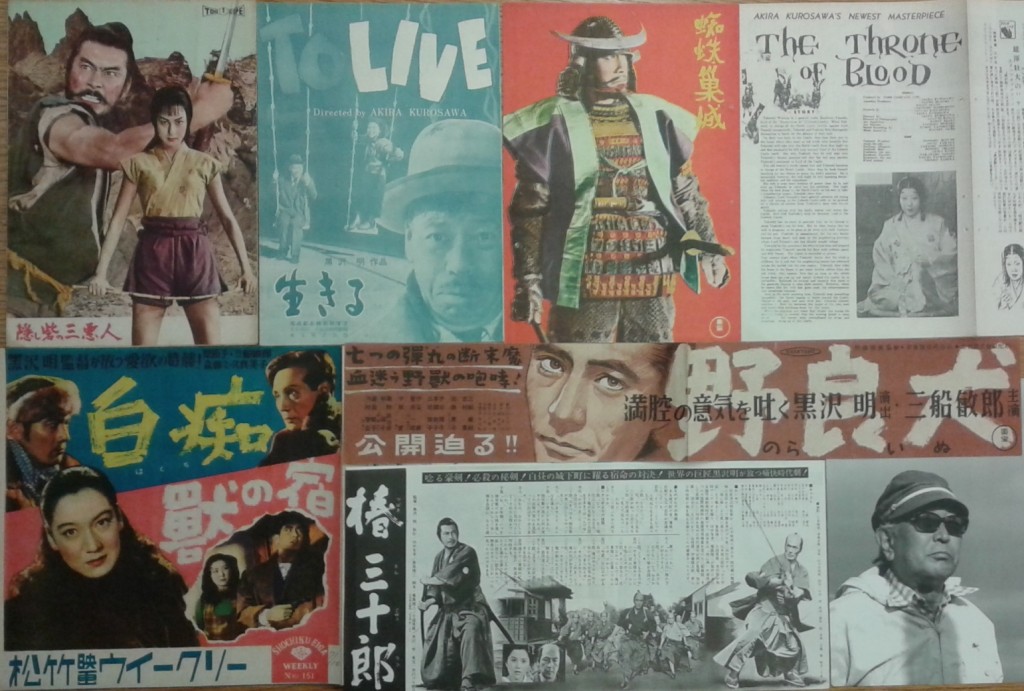 The final phase of the project to make hidden treasures from the Makino Collection available to the public has started moving ahead.
The final phase of the project to make hidden treasures from the Makino Collection available to the public has started moving ahead.
The Makino Mamoru Collection on the History of East Asian Film has been lauded for its scholarly value and awarded a generous grant from the Andrew W. Mellon Foundation, through the administration of the Council on Library and Information Resources (CLIR), as a Hidden Collections project. The final phase to make these hidden treasures available to the public has resumed. According to an initial survey, total number of materials in this collection reaches nearly 80,000 items. While approximately half of the entire collection has already been processed, the CLIR project consists of two main goals: to process the remaining film ephemera and catalog the rare books and monographs. The archival materials awaiting processing are mainly post-war film ephemera. Approximately 6,500 items in the “hidden collection” are to be arranged, described, and preserved in order to enhance access, expand research potential, and inspire new theories on East Asian Film.
As is often observed in academic film studies, Japanese film scholars have had difficulty obtaining comprehensive research materials, which has undervalued the importance of collecting and preserving materials on this subject. Unfortunately, this trend has moved the focus onto less valuable forms of media in the field of Japanese film studies. In a 2011 publication, the collector, Mr. Makino Mamoru explained the reason for the absence of academic resources, using a term, “le septième art [the seventh art],” coined by an Italian film theoretician, Ricciotto Canudo in 1911: “In the past, when discussing the culture or artistic genre of each period, film was long considered a sub-culture, and treated as le septième art, in contrast with existing traditional artistic fields such as literature, painting and music.” Because of this attitude, very few resources have been accumulated. Moreover, collectors generally focus on film stills and posters, which represent the esthetic aspects of movies. Aware of this issue, Mr. Makino has endeavored to collect print materials related to film history in addition to images. He decided that this vibrant print culture needed to be collected before being completely lost.

This collection is significant not just for what it contains, but because it exists at all. Simply put, the line-up of this collection is just breathtaking not only for scholars and researchers, but also anybody who is interested in Japanese films and film history. Of the 80,000 separate items, some highlights include scenario copies of world renowned director’s films such as Tadao Ikeda‘s for Yasujirō Ozu; hard-to-find company documents and reports relating to major Japanese film production companies (film studios) such as Tōhō (P.C.L.), Shōchiku and Nikkatsu, and complete works and personal collections of film critics, including Matsuo Kishi, Akira Iwasaki, and Nagaharu Yodogawa.

These items are just one tiny portion of precious and valuable materials that Makino Collection has amassed. Who wouldn’t be fascinated by them? As previous blog posts have explained, this collection covers a broad range of topics, themes, genres, figures, historical contexts of films, in a variety of media and languages. Lots of people with different interests and purposes would benefit from this collection.

The film ephemera in this collection include not only Japanese films (hōga), but a sizable amount of ephemera related to Western and Asian films (yōga) that were released in Japan. The boxes of unprocessed materials are full of gems from Japanese, Asian and Western films; they contain film programs, flyers (chirashi), posters, addenda from film magazines, pamphlets, and promotional materials (senden zairyō/senzai) that were not distributed to the public.
As Mr.Makino observes in his book, now that more attention is being paid to print material, film studies discussions have finally been exciting in academia. In this context, the Makino Collection’s existence makes a great deal of sense. The fascinating content will be unveiled gradually on this blog, before its public exposure as an entire collection. Stay tuned!